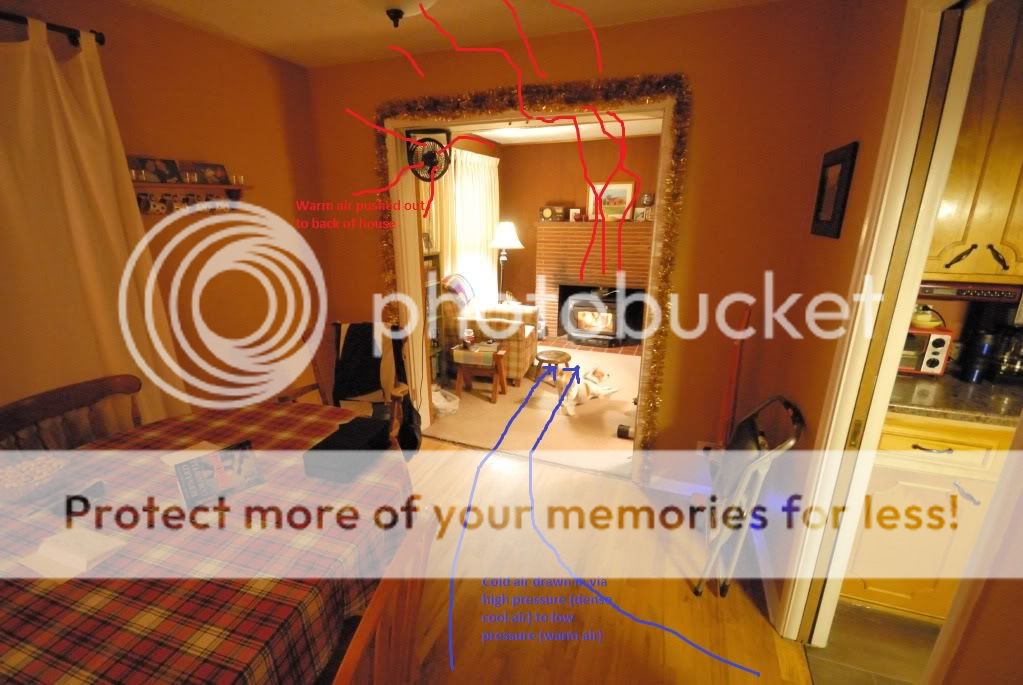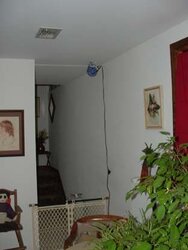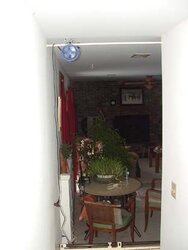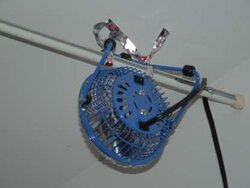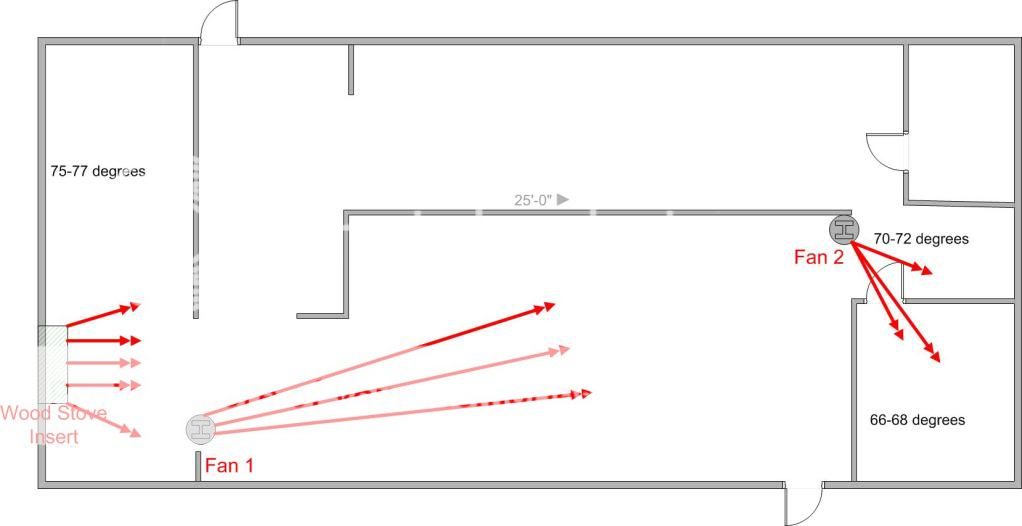Hotprinter, I agree, this is a really important topic.
I thought this article had some interesting points. When I read your post, I thought of `upstairs' to mean in the upper story of a house above the ground floor, but in the article, I'm reading that to mean `not in the basement, at ground floor level'. There are some people here successfully heating a house with stoves in the basement, but there are a couple of things they have to deal with. One is the subject of your post, which is heat circulation, and the other is the chimney effect--the idea (as I understand it) that when you bring in outside air, it's going to want to vent up at the height that it comes in from--that you're dealing with a pressure differential driven by differences in temperature. So your stove has to work against that to pull air down into a basement.
I'm in a two-story house, with the downstairs story earth-sheltered across the back, and partially so on the east and west sides.. I was concerned about stack effect in this house, and wondered about putting in an OAK. The installer advised against it, saying that in extreme weather, he's seen them turn into ice-clogged nightmares, suggested that I at least wait and live with my stove to see if it was needed. I'm glad I did, because my system works really well, and I think it's due to something I haven't seen discussed much on here nor did I think about it before I installed the stove.
To make a short story long and boring: the house has a stairway running along the center of the north wall; at the head of the stairs, parallel to the run of the stairs, is an slightly-leaky exterior door. The stairs run further than the dividing wall, with the last several steps open into the rooms below (landing, kitchen. dining room all fan off the base of the steps).
There is a semi-open floor plan downstairs, with the kitchen to the east opening at the other end to a sunroom, which opens at its other end to the dining room, and the stove is located in the open diningroom/livingroom area--in other words, a large circle of rooms. A large pass-through window between kitchen and dining room contribute to this circulation as well. There is an exterior door in the sunroom at the opposite end from the dining room door, through which some outside air is pulled. Differing temperatures work as an engine to drive a slow circulation between these room, almost unnoticiable except in the results.
I feel a definite flow of cool air down the stairs at ankle height when the stove is running, and it feeds the air flow. It's not a fridgid breeze, not chilling, just cool, even in very cold weather, so considerable air mixing must be taking place on the stairs. I can feel the flow in a pretty straight shot from the stairwell to the stove air intake. I assume that as the cool air comes downstairs, a significant (although probably not equivalent) amount of warmer air is displaced up the stairs.
The stairwell ceiling is the same height as the upstairs ceiling, instead of having a ceiling that follows the dropping of the stairs, and I think this is a big part of what makes the house work in two ways: there is a considerable amount of headroom in which the hot air can pool on the upper-story level, so rather than exiting under the upstairs door, hot air can be driven up above the door height before it gets to the door--like a pool of hot air above the stairs; secondly, cool air entering under the upstairs door creates turbulence that drives warm air out of this pool, and gets it moving into the rest of the upstairs. Or so I assume.
Upstairs, the bathrooms are located centrally, backed up against the stairwell wall. By leaving doors open to and between the bathroom, an adjoining bedroom, and the upstairs living room, another circle of air is created just off that reservoir. Temperature differences between these rooms create a constant, slow air flow--too slow to feel, but which carries the air back even into the far bedroom on the east side of the house--furthest away from the head of the stairs. When the stove has been running continuously for several hours with a moderate fire, we get a consistent temperature in the house, with the upstairs bedrooms only a degree or two cooler than the hearth room. I dont have cold drafts in the hearth room (although the sunroom and kitchen floors run cool, unless the boiler is running).
I have thought a lot about this, because I didn't expect it to work so well. I've tried to visulize airflow as cool and warmer air flowing around the house, and am still figuring this out. I expected warmth downstairs, and a little `heat rises' effect upstairs. Instead, I am comfortably heating the whole house, and I wondered why (no complaints). I thought the fact that the upper story is somewhat labrynthian would work against my heating it, but I think that the temperature differences in this circular maze of rooms is actually driving circulation.
I've been finding that everyone I spoke to who gets this same consistent warmth in their houses in this climate has something similar in their setup--either a series of horizontal-plane circles like mine, or ones on a vertical plane created by multiple grilles in rooms. I'm not an engineer, obviously--just a curious observer who got lucky with house configuration. But I wonder if it isn't something we should all be looking at a little harder in designing the house-stove-stack system. I think in a good situation, nothing needs to be done to move the air; the temperature differences between warmer rooms/cooler rooms drive circulation. It doesn't have to be a fast breeze--it can be imperceptibly slow, and still work. Look at how slowly the Great Current moves, yet it drives climate planet-wide.
Consider making haste slowly on circulation changes until you get the BK up and running and see how things are flowing for you. Congrats!


